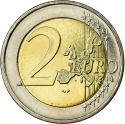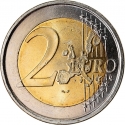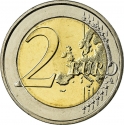You are about to finish your registration. Please check your mailbox (including spam folder). There should be a letter with a confirmation link. Check setting to make sure that your e-mail address is correct.
Send letter againDescription
The Ionian Islands are a group of islands in Greece, traditionally called the Heptanese, i.e. "the Seven Islands". From 1204, the Republic of Venice controlled Corfu and slowly all the Ionian islands fell under Venetian rule. In 1797 Napoléon Bonaparte conquered Venice, and by the Treaty of Campo Formio the islanders found themselves under French rule. In 1809, the British defeated the French fleet in Zakynthos (October 2, 1809) captured Kefallonia, Kythera and Zakynthos, and took Lefkada in 1810.
Once Greek independence was established after 1830, however, the islanders began to resent foreign rule. In 1862, Britain decided to transfer the islands to Greece, as a gesture of support intended to bolster the new king's popularity. On May 2, 1864, the British departed and the islands became three provinces of the Kingdom of Greece though Britain retained the use of the port of Corfu.
Obverse

|
The 'Seven Point Star' symbolizes the "Ionian Dimension" ("Ιόνια Διάσταση"): the 'Group of Seven Islands' ("Ἑπτάνησα" / Eptanisa) in the Ionian Sea bore and inspired outstanding representatives in the fields of art, important musicians, poets, painters and politicians. Clockwise from top, the visuals symbolize the following islands: 150 |
|---|---|
Reverse

|
A geographical map of Western Europe spans the outer ring and inner core on the right side of the coin. The inscription 2 EURO is superimposed over the map of Europe, with the numeral “2” located in an open field representing the eastern Atlantic Ocean. 2 EURO |
| Edge |
HELLENIC REPUBLIC in Greek ΕΛΛΗΝΙΚΗ ΔΗΜΟΚΡΑΤΙΑ ★ |
Characteristics
| Type | Commemorative Issue (Circulating) |
| Material | Bi-Metallic |
| Ring | Cupronickel |
| Center | Nickel Brass |
| Weight | 8.5 g |
| Diameter | 25.75 mm |
| Thickness | 2.2 mm |
| Shape |
|
| Alignment | Medal |
| Mint |
Bank of Greece
|







